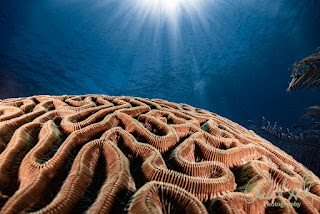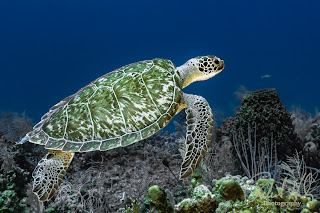Photo Editing: Best Practices and Tools for Underwater Photography
Welcome back to my blog, my fellow fans of the underwater world! In today's discussion, we will be diving into the captivating realm of photo editing. This crucial step can elevate your underwater images from ordinary to extraordinary. As someone who captures and processes hundreds of photos every week, I have gathered a wealth of insights and tips to assist you in maximizing the potential of your underwater photography through the use of Adobe Lightroom. Together, we will explore the finest techniques and indispensable tools that can truly enhance your underwater shots.
Understanding the Importance of Photo Editing
Underwater photography presents unique challenges such as
color loss, low contrast, and backscatter. Editing your photos is essential to:
- Correct
Color Imbalances: Water absorbs light differently, causing colors to
appear washed out or tinted. Editing helps restore the true colors.
- Enhance
Contrast and Sharpness: Underwater environments can make photos look
flat. Increasing contrast and sharpening details can make your subjects
pop.
- Remove
Distractions: Particles in the water, known as backscatter, can mar
your images. Editing tools can help clean up these distractions.
- Highlight
the Beauty and Details: Post-processing allows you to bring out the
intricate details of marine life that may not be apparent in the original
photo.
Best Practices for Editing Underwater Photos
- Shoot
in RAW Format
- RAW
files contain more data, giving you greater flexibility in
post-processing.
- Allows
for better color correction and exposure adjustments.
- Use
the Right Software
- Adobe
Lightroom is my go-to tool for its robust features tailored for
photographers.
- It
provides non-destructive editing, meaning your original photos remain
intact.
- Start
with Basic Adjustments
- Exposure:
Correct overall exposure to ensure your image is neither too dark nor too
bright. Use the histogram to avoid clipping highlights and shadows.
- White
Balance: Adjust to correct color cast caused by underwater lighting.
Start by using the eyedropper tool on a neutral area.
- Contrast:
Increase contrast to add depth and dimension. This can help in
distinguishing your subject from the background.
- Color
Correction
- White
Balance: Use the eyedropper tool to neutralize color casts. Adjust
the temperature and tint sliders until the colors look natural.
- HSL/Color
Panel: Fine-tune specific colors to restore the natural hues of
marine life. Adjust the hue, saturation, and luminance sliders for each
color channel.
- Enhance
Details
- Clarity
and Texture: Adjust to bring out fine details in coral and marine
creatures. Clarity increases mid-tone contrast, while texture enhances
fine details without affecting the overall image.
- Sharpening:
Apply sharpening to enhance the edges and details. Use the masking slider
to target only the important edges and avoid sharpening noise.
- Reduce
Noise
- Underwater
photos can be noisy due to high ISO settings. Use the noise reduction
tool to minimize graininess. The balance between luminance and color noise
reduction to maintain detail.
- Remove
Backscatter
- Three
tools to try depending on the amount of backscatter and distractions.
- Spot
Removal Tool - Use the spot removal tool to eliminate distracting
particles and bubbles. Zoom in to clean up any noticeable spots.
- Masking
– These tools allow you to select either people (divers), background, sky
(water towards the surface), objects, items by color or luminance, or a Paint
Brush (to select whatever).
- Lens
Blur – This tool works well when the subject is in the forefront of
the photo and allows you to blur the background (water, bubbles, other
divers, etc.)
- Use
Local Adjustments
- Radial
and Graduated Filters: Apply targeted adjustments to specific areas
of the photo. Use these to enhance light and color in particular
sections.
- Adjustment
Brush: Make precise edits to highlight important details. Adjust
exposure, clarity, and other settings locally.
- Final
Touches
- Crop
and Straighten: Adjust composition and horizon lines to improve
framing and balance.
- Vignette:
Add a subtle vignette to draw attention to the subject. This can enhance
the focus on your main subject by darkening the edges.
Essential Tools in Adobe Lightroom for Underwater
Photography
- White
Balance Tool
- Crucial
for correcting color temperature and tint. Start with auto white balance,
then fine-tune manually.
- HSL/Color
Panel
- Allows
for precise control over individual colors. Use it to correct specific
color issues and enhance overall color balance.
- Detail
Panel
- Includes
sharpening and noise reduction tools. Essential for improving image
quality while maintaining a natural look.
- Spot
Removal Tool
- Effective
for removing backscatter and other imperfections. Use the clone or heal
option depending on the complexity of the area.
- Graduated
and Radial Filters
- Useful
for enhancing specific areas without affecting the entire image. Adjust
exposure, contrast, and clarity locally.
- Adjustment
Brush
- Offers
precision for local adjustments. Paint adjustments onto specific areas
that need enhancement or correction.
Workflow Tips
- Organize
Your Photos
- Use
Lightroom’s library module to import, categorize, and rate your photos.
Create collections and use keywords for easy retrieval.
- Create
Presets
- Develop
custom presets for your typical underwater scenes to speed up the editing
process. Save frequently used adjustments to apply with one click.
- Batch
Processing
- Apply
settings to multiple photos at once to maintain consistency and save
time. Sync settings across similar images to streamline your workflow.
- Regular
Backups
- Ensure
you have backups of your original and edited photos to prevent data loss.
Use external drives or cloud storage for redundancy.
Conclusion
Editing underwater photos can be a rewarding process that breathes life into your images. By following these best practices and utilizing Adobe Lightroom’s powerful tools, you can enhance your underwater photography and share the vibrant beauty of the ocean with your audience.
Feel free to share your editing experiences or ask questions
in the comments below. For more tips and personalized training, don't hesitate
to contact me at bob@robertherb.com. Until next week, keep capturing the
wonders of the underwater world!
Stay Connected
Follow my blog for more tips and tutorials on underwater
photography. Let's dive deeper into the art and craft of capturing the marine
world!
New Online Training Program
I am excited to announce that I am creating an online training program to teach underwater hobbyists and enthusiasts how to enhance their photos using Adobe Lightroom. If you are interested in this training, please contact me at bob@robertherb.com to express your interest and to be notified about the details and start date of the classes.
Feel free to reach out to me at bob@robertherb.com if you have any questions or need further advice on underwater photography gear. Safe travels and fantastic dives!
Stay tuned and "Follow" for upcoming blogs on underwater photography tips and tricks for more in-depth insights. Please leave your comments and suggestions. Enjoy your diving and shooting experience!
I am eagerly anticipating your valuable feedback and suggestions.
Sincerely,
Bob Herb
|
|





Comments
Post a Comment
Please let me know your comments.